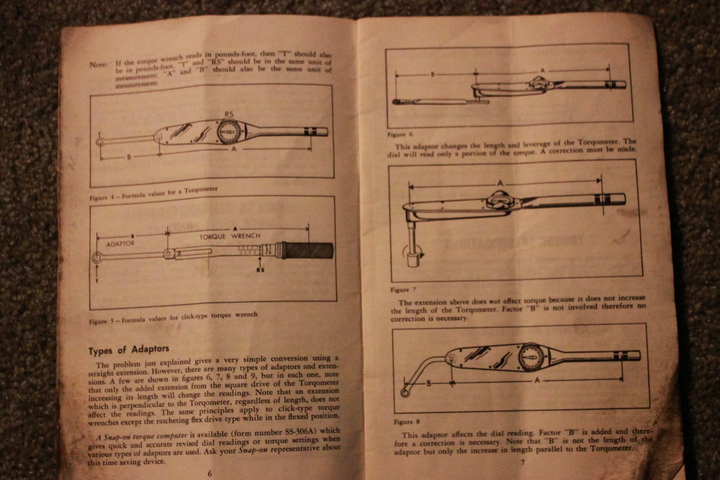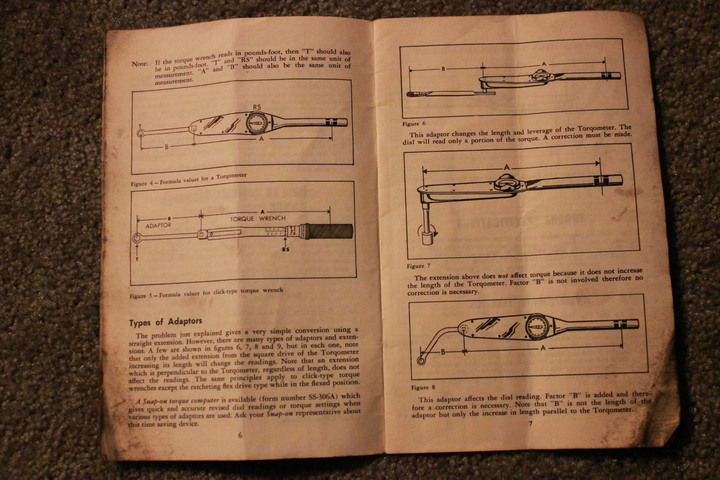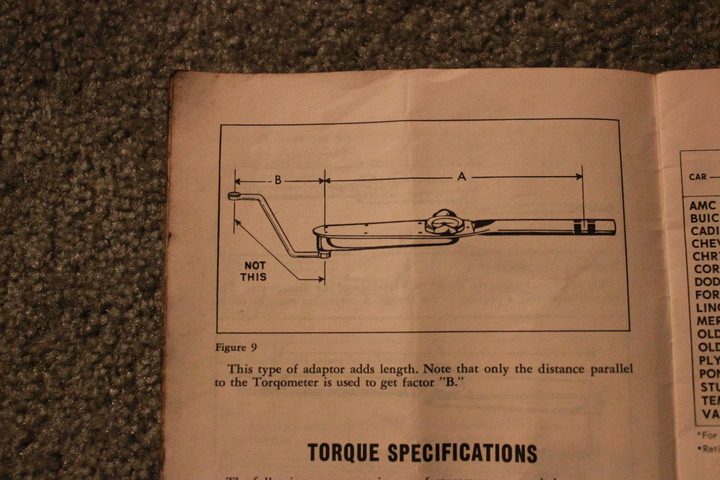I don't know if this started as a joke, but it turned into a good habit. Whenever getting a ratchet I always put an extension on it. The longer the extension the better, usually. 8"-10" extensions are really good.
9 times out of 10 the extension does more harm than good. It makes the ratchet a two handed tool. And sometimes I can bring a knee into it. Gripping the socket with a few fingers is not as good. Torque problems only arise when using wobbles or too many drive fittings. In those cases where the extension doesn't help, it takes 2 seconds to remove. Whereas not picking up the extension because you probably won't need it is the wrong way to look at it. Pick it up every time and be surprised how often it helps.
9 times out of 10 the extension does more harm than good. It makes the ratchet a two handed tool. And sometimes I can bring a knee into it. Gripping the socket with a few fingers is not as good. Torque problems only arise when using wobbles or too many drive fittings. In those cases where the extension doesn't help, it takes 2 seconds to remove. Whereas not picking up the extension because you probably won't need it is the wrong way to look at it. Pick it up every time and be surprised how often it helps.




